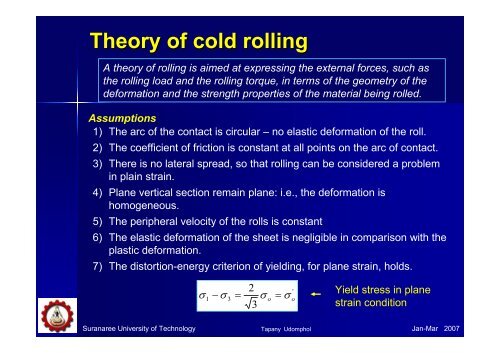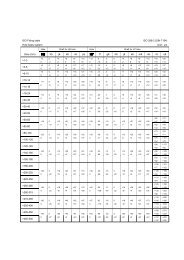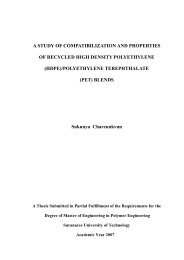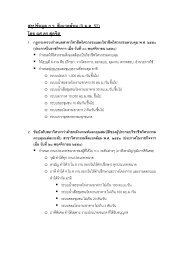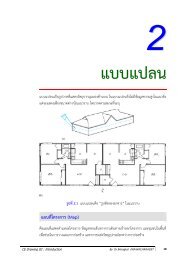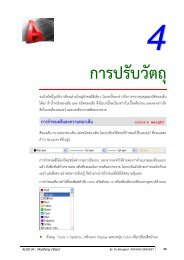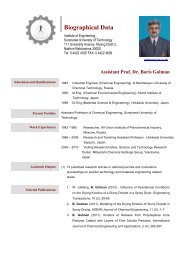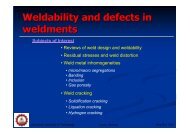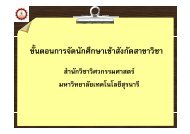Chapter 3 - Rolling of metals
Chapter 3 - Rolling of metals
Chapter 3 - Rolling of metals
You also want an ePaper? Increase the reach of your titles
YUMPU automatically turns print PDFs into web optimized ePapers that Google loves.
Theory <strong>of</strong> cold rolling<br />
A theory <strong>of</strong> rolling is aimed at expressing the external forces, such as<br />
the rolling load and the rolling torque, in terms <strong>of</strong> the geometry <strong>of</strong> the<br />
deformation and the strength properties <strong>of</strong> the material being rolled.<br />
Assumptions<br />
1) The arc <strong>of</strong> the contact is circular – no elastic deformation <strong>of</strong> the roll.<br />
2) The coefficient <strong>of</strong> friction is constant at all points on the arc <strong>of</strong> contact.<br />
3) There is no lateral spread, so that rolling can be considered a problem<br />
in plain strain.<br />
4) Plane vertical section remain plane: i.e., the deformation is<br />
homogeneous.<br />
5) The peripheral velocity <strong>of</strong> the rolls is constant<br />
6) The elastic deformation <strong>of</strong> the sheet is negligible in comparison with the<br />
plastic deformation.<br />
7) The distortion-energy criterion <strong>of</strong> yielding, for plane strain, holds.<br />
2<br />
σ 1 −σ<br />
3 = σ o = σ<br />
3<br />
Suranaree University <strong>of</strong> Technology Tapany Udomphol<br />
Jan-Mar 2007<br />
'<br />
o<br />
Yield stress in plane<br />
strain condition


